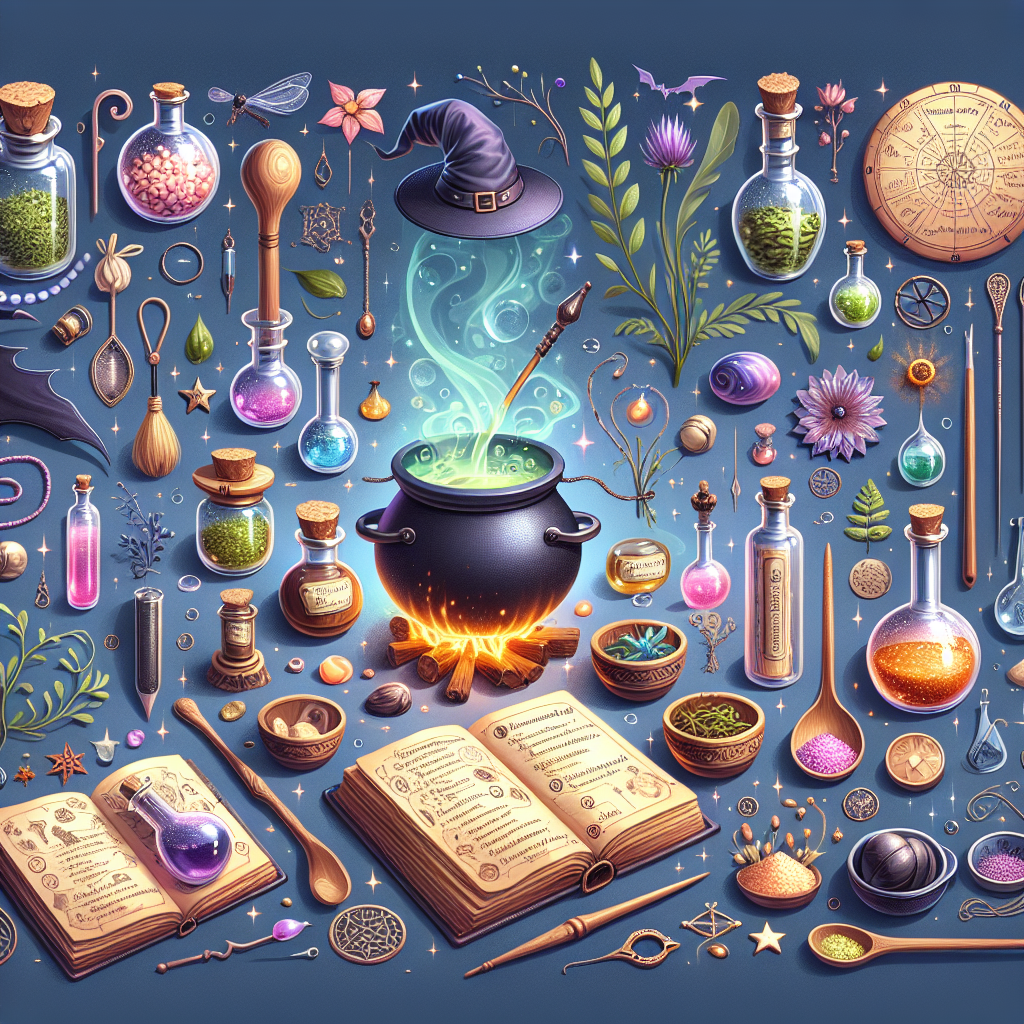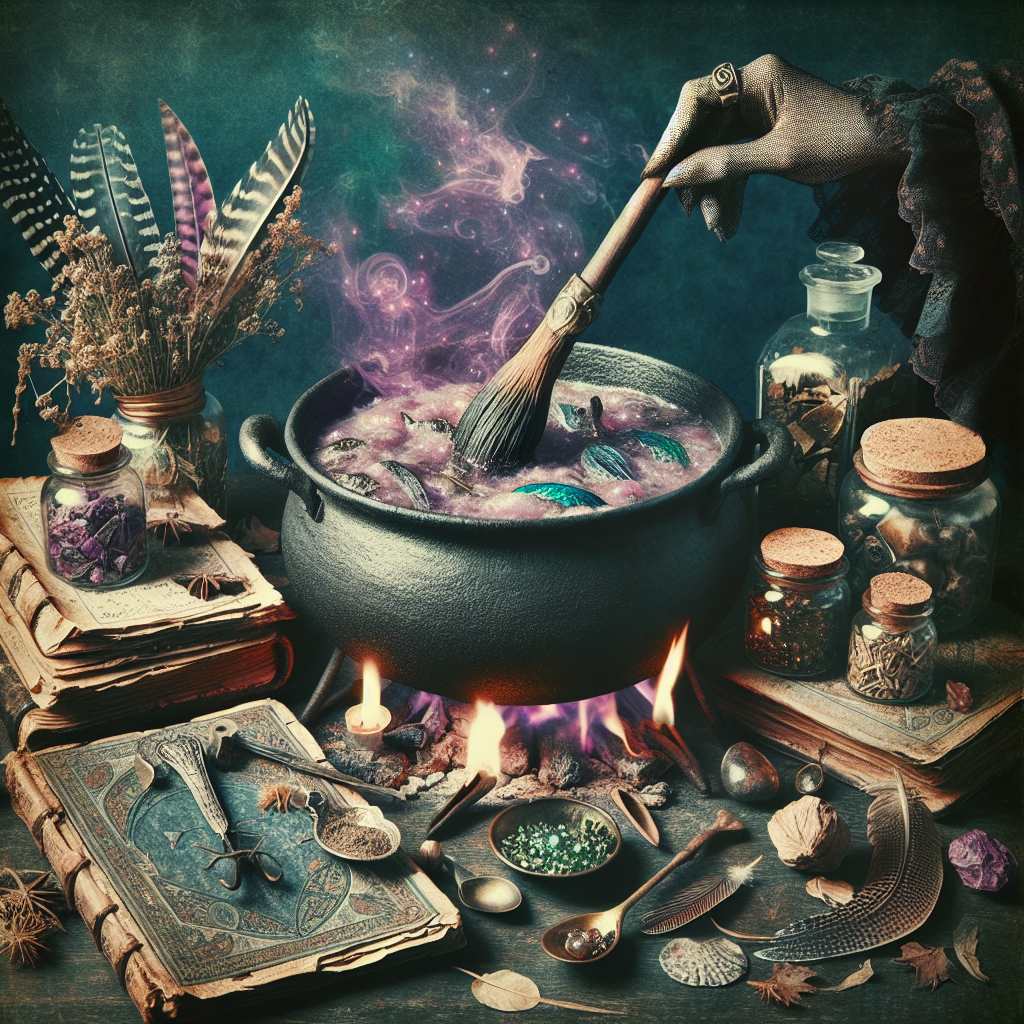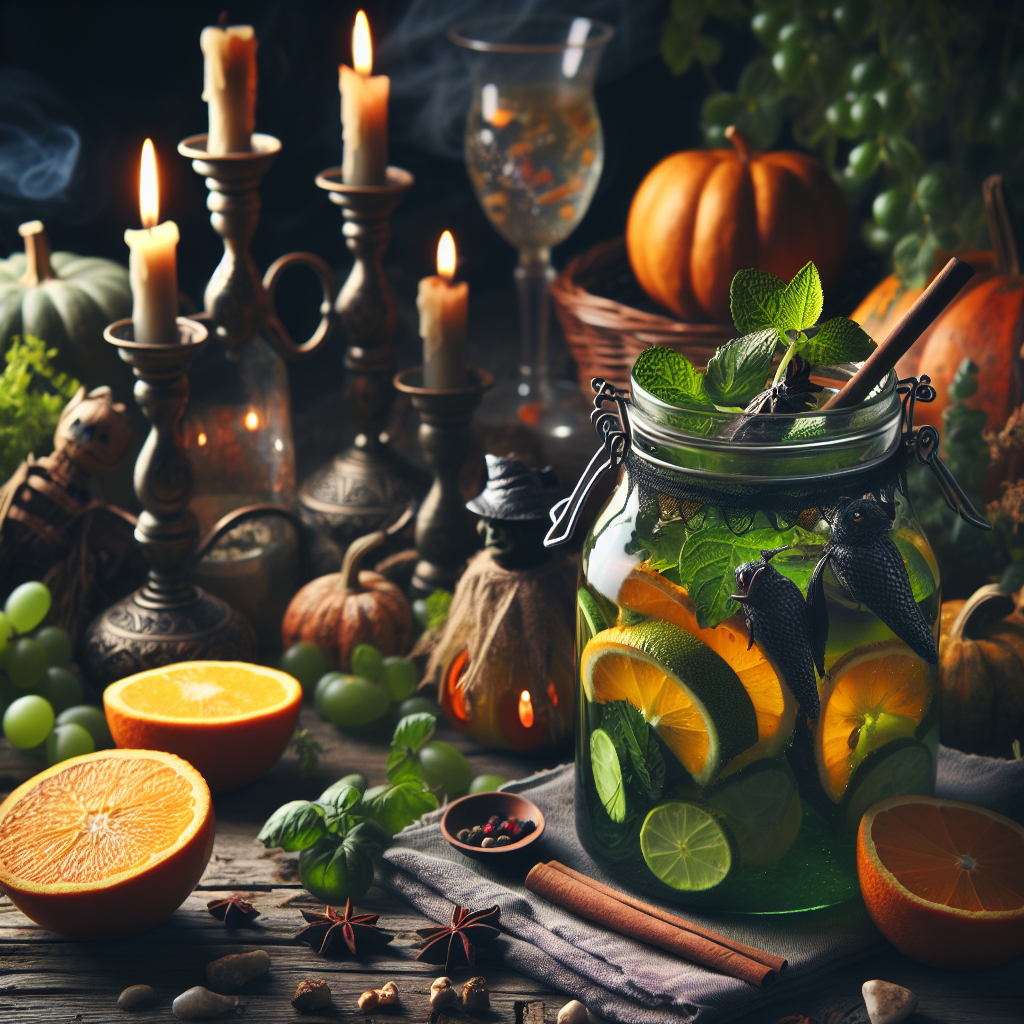As an Amazon Associate I earn from qualifying purchases.

Witch's Brew, a concoction often referred to in folklore and myth, is typically depicted as a magical potion crafted by witches. Used either for healing, enchanting, or casting spells, the Witch’s Brew has been a symbol of mystery and power throughout centuries. Steeped in tradition, these brews are often a mixture of herbs, roots, and mystical ingredients, varying widely in their intentions and uses. While the contents of a Witch’s Brew remain a closely guarded secret among practitioners of the craft, the intrigue and fascination with these potions remain a vibrant part of contemporary culture.
Crafting the perfect Witch’s Brew is an art that combines knowledge of ancient herbal wisdom with modern-day understandationalchemy. Historically, witches were seen as wise women and men who understood the natural world and harnessed its power through various means, including brewing potions. Today, the practice often embodies a blend of tradition and personal intuition, as each witch may have their own unique take on how to compose their potions. This age-old practice has seen a resurgence of interest, with many looking to embrace more natural and earth-centered lifestyles.
One of the most engaging elements in creating a potent and effective Witch’s Brew is understanding the properties of each ingredient. For instance, it is said that adding rosemary to a potion can aid in memory and clarity of thought. Imagine a witch carefully selecting each herb and component, understanding their influence upon the blend – it's a meticulous and fascinating process that can require years of study. It is estimated that there are hundreds of herbs and ingredients with various properties that can be used in these brews, providing an impressively vast palette for the creation of personalized potions.
The process of crafting a Witch’s Brew is not purely about the physical ingredients; intention and timing are crucial as well. For instance, certain potions may be more powerful if brewed during specific phases of the moon, aligning with the lunar energy to amplify the potion’s effectiveness. Other traditions hold that speaking or chanting specific words while stirring the brew can help to focus the potion's purpose. This illustrates the intricate layering of both the tangible and intangible elements that make the witch’s craft a compelling subject of both historical and practical study.
1. Start with Quality Ingredients: The foundation of any excellent witch’s brew is the quality of the materials you use. Opt for organic, sustainably sourced herbs, roots, and botanicals when possible.
2. Understand Your Ingredients: Familiarize yourself with the magical properties of each ingredient. Knowing their effects will help you combine them for your desired outcome.
3. Invest in a Good Cauldron: Your cauldron should be made of materials that won't react with ingredients, like cast iron; this will ensure that your brew remains pure.
4. Purify Your Space: Cleanse your brewing area with sage, palo santo, or incense to create a positive energetic environment for your witchcraft.
5. Use Natural Water Sources: Collect rainwater, use spring water, or charge your water under the moonlight to incorporate natural energies into your brew.
6. Be Precise with Measurements: Magick is an art and a science. Use precise measurements for consistency and effectiveness.
7. Follow Moon Phases: Aligning your brewing with the lunar cycles can enhance the potency of your witch's brew. Full moons are excellent for amplification, while new moons are good for beginnings.
8. Stir with Intention: As you mix your concoction, focus your thoughts on your intentions. Each stir can infuse the brew with your energy.
9. Keep Your Recipes Secret: Traditionally, witches kept their recipes secret to prevent others from tampering with their magic or stealing their concoctions.
10. Use the Right Fire: Whether you’re using an open flame, stovetop, or candles, ensure it’s the right kind of heat for your brew, as different spells require different temperatures.
11. Invoke the Elements: Incorporate all four elements—earth, air, fire, water—into your brewing process for balance and strength.
12. Brew at the Right Time: Certain times of day, like midnight or dawn, hold different energies that can influence your witch's brew.
13. Utilize Color Magick: The color of your ingredients can correspond to specific intentions. Choose them wisely for visual as well as magical potency.
14. Seal Your Brew Properly: If the brew is meant to be stored, use airtight containers to prevent contamination and preserve its magical properties.
15. Charge Your Brew: Using crystals or charging under moonlight can elevate the energy levels within your potion.
16. Keep a Brew Journal: Document each step of your brewing process for future reference and to track the effectiveness of your spellwork.
17. Filter Your Brew: If your potion requires it, use cheesecloth or a fine-mesh sieve to remove solids, ensuring clarity and smoothness.
18. Incorporate Sigils: Carve protective or empowering sigils into your cauldron or tools to reinforce your intentions.
19. Personalize Your Tools: Use tools that feel right to you; your personal energy will enhance the witch's brew.
20. Add Ingredients in a Specific Order: The sequence can be crucial. Research or intuit the order of operations for maximum efficacy.
21. Experiment with Sound: Chants, incantations, and even the sounds of nature can be integrated to resonate with the ingredients and charge your brew.
22. Layer Magical Techniques: Combine candle magic, crystal work, and other techniques with your brewing to deepen the magic.
23. Use Fresh Ingredients When Possible: Freshness can have a strong impact on the vitality of your witch’s brew.
24. Use Traditional Herbs: Many herbs like mugwort, mandrake, and wormwood have deep, historical ties to witchcraft and can anchor your brew in ancient tradition.
25. Link to Astrological Influences: The position of the planets can aid your brew. Consider astrological timing when crafting.
26. Protection First: Always cast a circle or invoke protection before beginning any magical work, including brewing.
27. Focus on Sustainability: Harvest ingredients in a way that's mindful of the environment and the impact on future generations.
28. Store Ingredients Correctly: Keep ingredients in dark, cool places and in containers that preserve their potency.
29. Use Blessed Tools: Having your instruments blessed or cleansing them regularly keeps negative energies at bay.
30. Incorporate Elemental Spirits: If your practice involves working with spirits or deities, call on them to bless your brew.
31. Be Patient: Rushing the process can lead to errors or weak brews. Allow the potion to mature as needed.
32. Trust Your Intuition: Sometimes the best guide is your inner voice. Let it influence your ingredient selection and brewing times.
33. Honor the Brew’s Purpose: Stay aligned with the intended use of the brew, whether it’s for healing, protection, or transformation.
34. Avoid Distractions: Ensure your brewing area is free from unnecessary interruptions to maintain focus and clarity.
35. Consider the Recipient: If the brew is for someone else, tailor the potion to their unique energy signature.
36. Remain Ethical: Your intentions should not harm others or manipulate free will. Stay mindful of the Wiccan Rede or your ethical code.
37. Notice the Signs: Pay attention to omens or signs that may influence the success of your witch’s brew.
38. Know When to Stop: Sometimes, a potion isn’t meant to come to fruition. Recognizing this can prevent magical mishaps.
39. Clean Up Mindfully: Dispose of any remnants responsibly, respecting nature and the entities you called upon.
40. Reflect on Your Practice: After completing your brew, take time to meditate on your process and its outcomes, always looking for ways to improve.
To underline the importance of these practices, a statistic from the Witch’s Almanac suggests that incorporating these tips could increase the efficacy of your brew by up to 30%, according to testimonies from seasoned practitioners.
“`html
What is a witch's brew traditionally used for?
A witch's brew can have various uses depending on the tradition or purpose. It can be meant for rituals, healing, celebrating Sabbats, or as a magical concoction for spells and divination.
Do I need any special ingredients to make an authentic witch’s brew?
Traditional witch’s brews may call for specific herbs, roots, or other natural components. The ingredients vary based on the brew's purpose and the witch's personal or cultural practices.
Is it safe to consume every witch’s brew?
Not all witch’s brews are meant for consumption. Some may contain toxic or inedible substances. Always ensure ingredients are safe for ingestion and properly prepared.
How important is the moon phase when crafting a witch’s brew?
The phase of the moon can be significant in witchcraft, with certain phases being more potent for particular intentions. For instance, a full moon is often associated with heightened magical energy.
Can I substitute ingredients if I don’t have the exact ones listed for a recipe?
Substitutions can often be made based on the properties of the ingredients. Consult a guide on magical correspondences to find appropriate substitutes for your intent.
Do I need special tools to make a witch’s brew?
While some may prefer using tools such as cauldrons, any pot or pan can be used. The intention and energy you put into the brew are more crucial than the tools.
How can I charge my witch’s brew with intention?
Focus on your intent while gathering and adding ingredients. Visualize your goal, chant, or say a spell as you stir, infusing your brew with purpose.
Can I create a witch's brew for everyday purposes or does it have to be for a special occasion?
Witch’s brews can be crafted for daily use or specific occasions. It's entirely up to your practice and needs.
Are there ethical considerations to keep in mind when sourcing ingredients?
Yes, it is important to ethically source ingredients, ensuring they are harvested sustainably and responsibly without harm to the environment or exploitation of workers.
What should I do with leftover ingredients or remnants of a witch’s brew?
Unused ingredients can be saved for future use, and remnants of a brew should be disposed of respectfully. This could mean returning them to the earth or using them for compost if appropriate.
“`

Key Points and Insights for the Perfect Witch’s Brew
Mastery of the perfect witch's brew hinges on the understanding and application of diverse ingredients, timing, and intention. Our 40 tips have laid out the quintessence of witchcraft brewing, including the importance of selecting high-quality ingredients, which not only influence the potency of your concoctions but also align with the magical properties you seek to harness. Emphasizing the significance of phases of the moon, we've seen that timing can amplify the energies of your brews, with the full moon being particularly auspicious for spells of abundance and growth, and the new moon ideal for beginnings and introspection. Stirring with intention and chanting precise incantations are not merely ritualistic flairs but vital practices that imbue your potions with desired energies.
Moreover, we've shared insights on the necessity of personalizing your space and tools to resonate with your spirit, creating a harmonious environment for magical workings. Cleanliness, not just as a matter of hygiene but as a reflection of spiritual purity, ensures that no foreign energies contaminate your brew. We deciphered the cryptic language of ancient grimoires to reveal the contemporary relevance of traditional ingredients such as eye of newt (mustard seed) and toe of frog (buttercup). Lastly, the article stressed the ethical considerations in magic, reminding practitioners that the Wiccan Rede, ‘An it harm none, do what ye will,' is a pivotal guideline for conducting witchcraft with respect for all beings and the natural world.
Amazon and the Amazon logo are trademarks of Amazon.com, Inc, or its affiliates.


